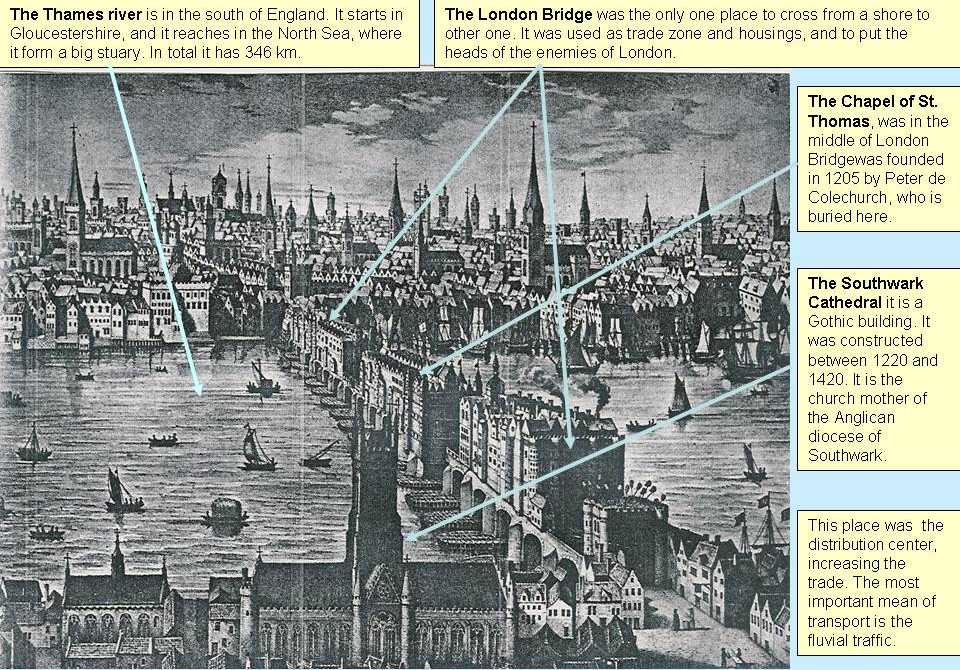This is an anonymous engraving of the city of London, located in King William Street, which represents the city in the 16th century. We can observe the old London Bridge, in which there are a large concentration of houses and shops. The image also highlights the Southwark Cathedral and many other churches. Nowadays, the old bridge has disappeared and has been replaced.
The city of London is located in the South East side of United Kingdom, seated near the river Thames. It was founded by the Romans 2000 years ago; they named it Londinium. This city with its harbor was an important population center with about 50,000 inhabitants during the Roman period. Around the city, the London wall was built. It was a defensive wall strategically placed where the river Thames is. The River Thames was the most important means of transport in the city, as a consequence of that the trade grew; allowing a further evolution and growth of population density. Due to the oceanic climate of London and the low speed of the water in the river (because it had many pillars), the river froze on several occasions, making transport and trade difficult.
The River Thames divided London into two main areas. In the North área there was Londinium where most of the churches were situated. In the South area, there was the suburb where were all the taverns, brothels and theaters. Here lived the poor people in low conditions. In the Middle Ages London had an irregular morphology. The central streets were surrounded by important buildings and some markets were installed in the back streets. The city was divided into neighborhoods which were distinguished according to the origin or the social classes. The important and wealthy people were located in the center of the city while the commoners lived in the surrounding area. In this time religion was very important, so there were many churches and cathedrals.
In London, most of the constructions were made up of wood following the Norman style. A terrible fire on September 2, 1666 destroyed the old city of London that was inside the city wall. It was a big tragedy because it knocked down many houses, churches and important buildings as the town hall. To rebuild the city, the changing needs of the population were taken into account and the new buildings were no longer made up of Wood. They were made out of brick or tile, to avoid problems such as the fire.
The economy of London was based on trade, politics, and industry. Thanks to its location next to the Thames river, trade could be developed, allowing to import and export products and goods. The industry, in particular the textile one, made the city grow and increase the number of inhabitants. Politically, it was also very important in that time. An example of it was the agreement of London (1604), signed in this city between Spain and London, which finished the Anglo-Spanish war.
In the picture we can see some important monuments such as the London Bridge. The bridge was built out of wood in the year 46. It was burned down by the King Ethelred to avoid a possible invasion of the Danes. It was rebuilt, but in 1091 it was destroyed again by a storm and in 1136 by another fire. In 1572, the bridge was rebuilt in stone and in the middle many homes, shops and a chapel were built. The current London Bridge was built between the years 1967 and 1972 and it was finally opened by Queen Elizabeth II in 1973.
Ana Isabel Carralero Marín.

